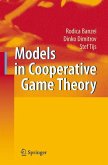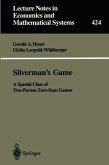Cooperative game theory is a booming research area with many new developments in the last few years. So, our main purpose when prep- ing the second edition was to incorporate as much of these new dev- opments as possible without changing the structure of the book. First, this o?ered us the opportunity to enhance and expand the treatment of traditional cooperative games, called here crisp games, and, especially, that of multi-choice games, in the idea to make the three parts of the monograph more balanced. Second, we have used the opportunity of a secondeditiontoupdateandenlargethelistofreferencesregardingthe threemodels of cooperative games. Finally, we have bene?ted fromthis opportunity by removing typos and a few less important results from the ?rst edition of the book, and by slightly polishing the English style and the punctuation, for the sake of consistency along the monograph. The main changes are: (1) Chapter 3 contains an additional section, Section 3. 3, on the - erage lexicographic value, which is a recent one-point solution concept de?ned on the class of balanced crisp games. (2) Chapter 4 is new. It o?ers a brief overview on solution c- cepts for crisp games from the point of view of egalitarian criteria, and presents in Section 4. 2 a recent set-valued solution concept based on egalitarian considerations, namely the equal split-o? set. (3)Chapter5isbasicallyanenlargedversionofChapter4ofthe?rst edition because Section 5. 4 dealing with the relation between convex games and clan games with crisp coalitions is new.
From the reviews: "This small book can be very interesting for readers who want to study further generalizations of the classical topic on cooperative games. It investigates the classical cooperative games with transferable utility and some game models in which the players have the possibility to cooperate partially, that is, fuzzy games and multichoice games. The book is written very clearly, being a rich review of the most essential notions and theorems (with proofs) in these topics." (Tadeusz Radzik, Zentralblatt MATH, Vol. 1079, 2006) From the reviews of the second edition: "This is the second edition of the highly regarded monograph on cooperative games by Branzei, Dimitrov and Tijs. ... The 128 references add to the value of the presentation. This monograph will bring the reader to almost everything currently known about cooperative games with transferable utility in coalition form." (Roy Gardner, Zentralblatt MATH, Vol. 1142, 2008)








